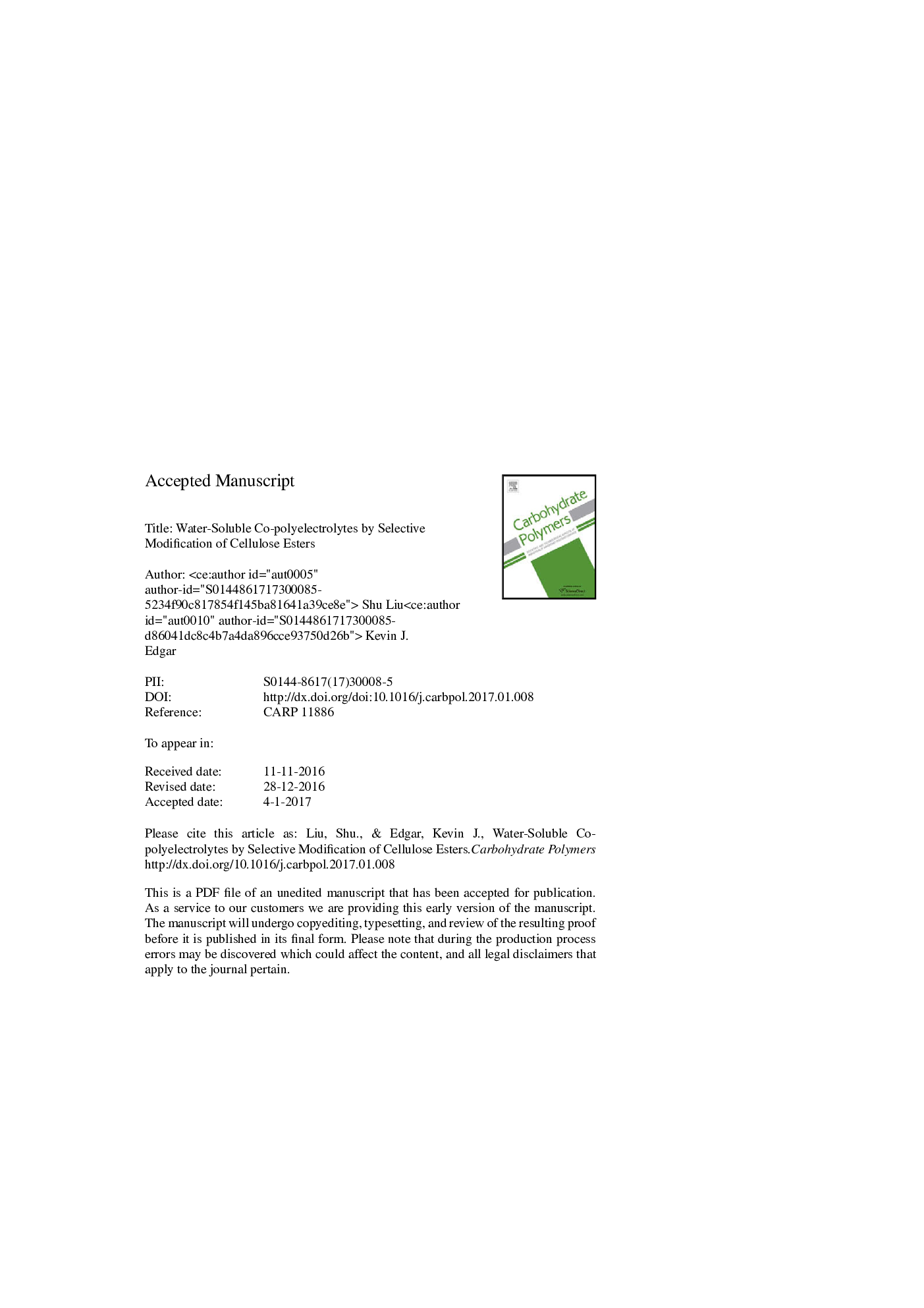| Article ID | Journal | Published Year | Pages | File Type |
|---|---|---|---|---|
| 5157651 | Carbohydrate Polymers | 2017 | 32 Pages |
Abstract
Cellulose-based materials are well-suited for biomedical uses, because of their abundance, renewable nature, biodegradability, and relatively low cost. However, the set of commercially available cellulose esters and ethers is limited in number and diversity, and contains no cationically charged cellulose esters. Herein we report a simple, efficient strategy for synthesizing cationic, water-soluble co-polyelectrolytes from commercial, hydrophobic, renewable-based cellulose esters. Cellulose acetate (degree of substitution (DS) 1.78, CA320S), was the exemplary starting material for preparing these cationic polyelectrolytes by a reaction sequence of phosphine-catalyzed bromination and subsequent displacement by an aromatic amine, affording high reaction conversions. We show that these modification techniques can be carried out with essentially complete regio- and chemoselectivity, proceeding in the presence of multiple ester groups, yet preserving those groups. Availability of these novel polysaccharide-based electrolytes starting from uncharged, commercial, inexpensive cellulose esters may open up multiple new application areas, including in several aspects of gene or drug delivery.
Related Topics
Physical Sciences and Engineering
Chemistry
Organic Chemistry
Authors
Shu Liu, Kevin J. Edgar,
